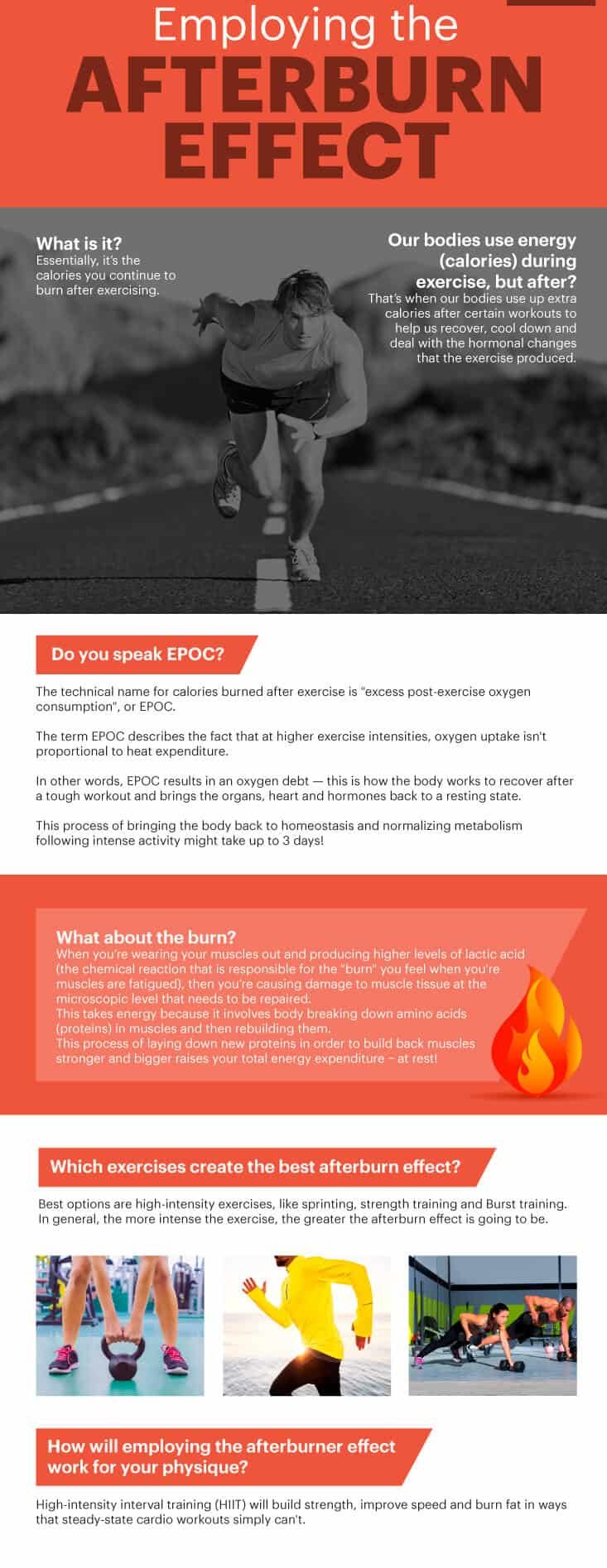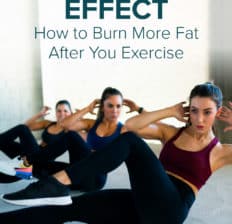This Dr. Axe content is medically reviewed or fact checked to ensure factually accurate information.
With strict editorial sourcing guidelines, we only link to academic research institutions, reputable media sites and, when research is available, medically peer-reviewed studies. Note that the numbers in parentheses (1, 2, etc.) are clickable links to these studies.
The information in our articles is NOT intended to replace a one-on-one relationship with a qualified health care professional and is not intended as medical advice.
This article is based on scientific evidence, written by experts and fact checked by our trained editorial staff. Note that the numbers in parentheses (1, 2, etc.) are clickable links to medically peer-reviewed studies.
Our team includes licensed nutritionists and dietitians, certified health education specialists, as well as certified strength and conditioning specialists, personal trainers and corrective exercise specialists. Our team aims to be not only thorough with its research, but also objective and unbiased.
The information in our articles is NOT intended to replace a one-on-one relationship with a qualified health care professional and is not intended as medical advice.
The Afterburn Effect: How to Burn More Fat After You Exercise
July 25, 2023

In simplest terms, the “afterburn effect” essentially means the calories you continue to burn after exercising. While many people primarily pay attention to the amount of calories they burn while running, cycling, swimming or lifting weights, there’s a whole other important component to calorie-burning that you might be overlooking.
That’s because our bodies actually use up extra energy (calories) after certain workouts to help us recover, cool down and deal with the hormonal changes that the exercise produced. The scientific name for this process is excess post-exercise oxygen consumption.
What does the research we now have available regarding benefits of the afterburn effect mean for the future of your workouts? If you properly plan your exercise routine so you do the right types of high-intensity workouts several times a week, you’ll gain the ability to burn more fat in less time.
Sound too good to be true? Here’s what this phenomenon is all about …
What Is the Afterburn Effect?
The key to increasing the afterburn effects of your workouts, so you can burn more calories throughout the whole day, is practicing high-intensity exercises. That’s because the afterburn effect is small following steady-state traditional cardio workouts like jogging but is significantly higher following intense workouts — like sprinting, circuit, strength and burst activities.
If your goals are to get leaner, build muscle fast, increase your cardiovascular health and not spend loads of time needing to exercise, then the bottom line is that doing brief, but intense, intermittent bouts of exercise is the way to go. The benefits of high-intensity interval training — commonly referred to as HIIT — are greater strength, improved speed and better fat burning, all in ways that steady-state cardio workouts simply can’t comparably create.
In general, the more intense the exercise, the greater the afterburn effect is going to be. This means that a workout that’s 20 minutes long involving sprinting (or practicing another form of burst training or intense activity) as fast as you can for 30 seconds, repeated for 10 rounds with 90-second rest periods in between, will have a higher afterburn effect compared to doing steady-state exercises like running moderately for 30 minutes.
How many more calories will the afterburn effect burn through following intense exercise? It’s hard to estimate an exact amount since every person reacts to high-intensity exercise differently. Factors like someone’s current level of fitness, gender, age, training duration and intensity can potentially influence the magnitude of the afterburn.
That being said, one study published in the Journal of Exercise Science showed that the afterburn effect is associated with an elevation in metabolism due to the thermic effect of activity regardless of your current fitness level — and some experts believe that this can cause around a 10 percent increase in calorie expenditure for the day following just 20 minutes of high-intensity exercise.
In other words, if you’re an active woman who normally burns 2,000 calories a day, taking into account your additional energy requirements might mean you’re now burning 2,200!
Here’s the scientific breakdown of the afterburn effect:
HIIT workouts increase your metabolism — in other words, they raise your total energy expenditure, which is the amount of calories your body burns for energy daily.
You can think of energy expenditure as the amount of energy a person uses up throughout the entire day performing all bodily activities, whether it’s walking around, showering or bending over. We all use up energy in the form of calories every time we breathe, move, digest food and our heart pumps out blood — so most of our energy expenditure goes without us even noticing or making an effort.
When it comes to exercise, of course, we do take notice of our increased effort and, therefore, the higher amount of energy we’re using. But the energy expenditure of a workout is the total measure of calories burned during and after exercise, so while we might be pushing ourselves at the gym and “feeling the burn,” we actually continue to use extra energy once the workout is over without even realizing it.
As you’re learning, certain forms of exercise (high-intensity) dial up the energy burn following exercise better than others. After intense exercise, your body has to work twice as hard to replenish its oxygen stores than it does after steady-state exercise.
The technical name for calories burned after exercise is “excess post-exercise oxygen consumption,” or EPOC. Evidence suggests an exponential relationship between exercise intensity and the magnitude of the EPOC.
The term EPOC describes the fact that at higher exercise intensities, oxygen uptake isn’t proportional to heat expenditure. In other words, EPOC results in an oxygen debt because this is how the body works to recover after a tough workout and brings the organs, heart and hormones back to a resting state.
The oxygen debt component is part of the reason there’s an afterburn effect because it takes a toll on energy use. In fact, this process of bringing the body back to homeostasis and normalizing metabolism following intense activity might take up to three days!
The more often you do intense workouts, the more it pays off. The International Journal of Sports Nutrition and Exercise Metabolism reports that EPOC varies as a function of metabolic stress, and more training improves the efficiency of metabolic regulation during recovery from exercise.
EPOC is not the only thing that accounts for the afterburn effect. Other aspects have to do with body’s production of lactic acid and the process of hypertrophy, or the building of muscle mass.
Think of it this way: If you’re wearing your muscles out and producing higher levels of lactic acid (the chemical reaction that is responsible for the “burn” you feel when your muscles are fatigued), then you’re causing damage to muscle tissue at the microscopic level that needs to be repaired. This takes energy because it involves the body breaking down amino acids (proteins) in muscles and then rebuilding them.
In the process, intense exercise also increases testosterone naturally, which can mean more muscle gain.
This process of laying down new proteins in order to build back muscles stronger and bigger raises your total energy expenditure — and basically all of this happens after you finish working out.

How to Activate the Afterburn Effect
For years, we’ve been led to believe that exercising for longer periods of time results in more calories burned and, therefore, a better body composition. In recent years, the idea that you can reach your goals by following an exercise regimen that’s actually the opposite is now well-supported by a growing field of research.
A 2011 report published in the Journal of Obesity states that although generally the effects of regular aerobic exercise on body fat is negligible, intense forms of exercise may have a greater impact on body composition. “Emerging research examining high-intensity intermittent exercise (HIIE) indicates that it may be more effective at reducing subcutaneous and abdominal body fat than other types of exercise.”
During aerobic exercise, the muscles use glucose (sugar) primarily for energy. On the other hand, during the longer recovery period described above, the body primarily uses fatty acids in addition to glucose. This translates into you burning more fat while you build more muscle.
That’s important because, even at rest, muscle burns more calories than stored body fat does.
How much intense exercise do you need to do? This depends on how intense your workouts are.
For example, the World Health Organization has switched away from simply recommending steady-state exercise and now advises the following:
Adults aged 18–64 years
- should do at least 150–300 minutes of moderate-intensity aerobic physical activity;
- or at least 75–150 minutes of vigorous-intensity aerobic physical activity; or an equivalent combination of moderate- and vigorous-intensity activity throughout the week
- should also do muscle-strengthening activities at moderate or greater intensity that involve all major muscle groups on 2 or more days a week, as these provide additional health benefits.
- may increase moderate-intensity aerobic physical activity to more than 300 minutes; or do more than 150 minutes of vigorous-intensity aerobic physical activity; or an equivalent combination of moderate- and vigorous-intensity activity throughout the week for additional health benefits.
- should limit the amount of time spent being sedentary. Replacing sedentary time with physical activity of any intensity (including light intensity) provides health benefits, and
- to help reduce the detrimental effects of high levels of sedentary behaviour on health, all adults and older adults should aim to do more than the recommended levels of moderate- to vigorous-intensity physical activity
Here are three ways to practice high-intensity exercise in order to dial up your afterburn effect:
1. Cycling, Using the Elliptical or Rowing
Instead of doing steady-state cardio for 50 minutes, halve this amount, and use interval training.
High-intensity interval training combines short, high-intensity bursts of exercise with slow, recovery phases. These intervals are repeated throughout one short (15- to 20-minute) session.
The intense parts are done at 85 percent–100 percent maximum heart rate, rather than 50 percent–70 percent that is the average moderate endurance activity level.
A simple way to practice HIIT is to push yourself as hard as you can for about 20–30 seconds, then take a rest of about 60 seconds. Repeat this cycle for the duration of your exercise.
The shorter your rest interval is, the harder it will be. You should feel wiped out afterward!
2. Weight Lifting or Resistance Training
Practice a circuit-style workout or complete “supersets.” Supersets are when you go from one weighted exercise straight into the next, without resting in between. You work one muscle group hard until it’s fatigued, then move on to another one right afterward.
In other words, you use opposite muscle groups so while you rest one, you train the other. For example, you might start with squats working your legs primarily, then move on to bench presses working your upper body primarily. Or you go from back rows to chest presses.
Also, to radically switch up your routine, give HIIT a try by incorporating some full-body kettlebell workouts, or do CrossFit workouts.
3. Sprinting
This is likely the most popular way to practice HIIT and achieve high afterburn effects. This model follows the same idea as that for cycling or rowing mentioned above — you swap a longer steady workout for a shorter but intense one.
And I mean intense!
During your sprints, you really want to push yourself, almost like you’re running because your life depends on it. Try sprinting for 10–15 minutes total to start, using 90-second intervals. This means pushing yourself very hard for 30 seconds, then taking a rest for one minute.
Repeat the cycle until you’re at about 15 minutes or slightly more once you’ve been practicing HIIT for a while. You can practice this outdoors or take it inside for an intense burst-training workout on a treadmill.
Related: Do Fitness Trackers Help You Become More Active?
Precautions
There’s still a lot to learn about the afterburn effect and how exactly it works. Almost every aspect of a workout — from the number of reps and sets completed, number of rest periods in between sets, intensity, speed, types of movements performed, and a person’s heart rate — can all impact how dramatic the afterburn effect turns out to be.
It appears that well-trained individuals have a more rapid return of post-exercise metabolism to resting levels after exercising. Therefore, they might be getting the most bang for their buck when it comes to HIIT workouts.
Nonetheless, there are plenty of benefits for people new to exercise, too, assuming they start slow and prevent injuries. One of the biggest challenges might be encouraging HIIT newbies and those who have weight to lose to even start intense exercise programs that can raise their afterburn effect, since intensity can be intimidating.
If you’re practicing HIIT for the first time, keep your workouts shorter, around 10 minutes, and use a method that you’re comfortable with, like running (on grass or a treadmill) or cycling.
Regardless of how fit you already are, HIIT workouts shouldn’t be done every day because this can increase injury risk. They’re best when completed just two to three times a week (or even less in some cases).
If you choose to do a circuit-style intense workout or one using weights, consider starting with a professional trainer to make sure your form is correct and you aren’t setting yourself up for injury.










